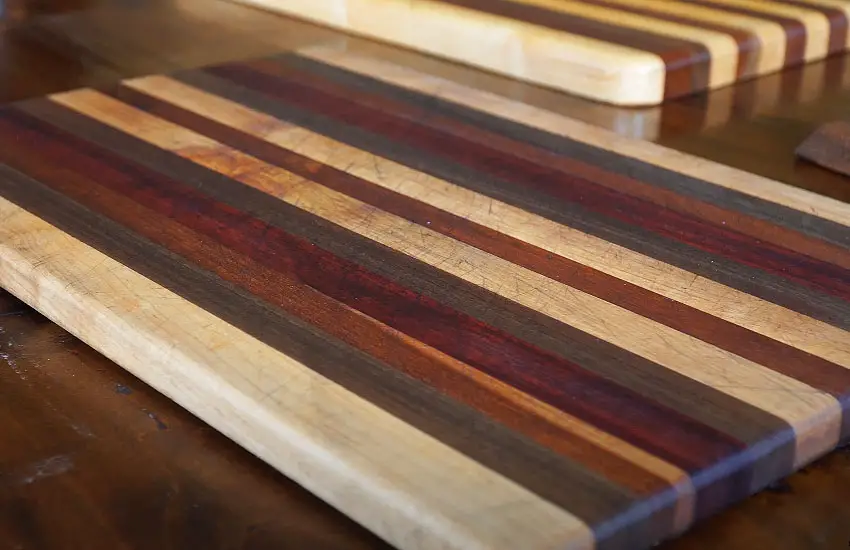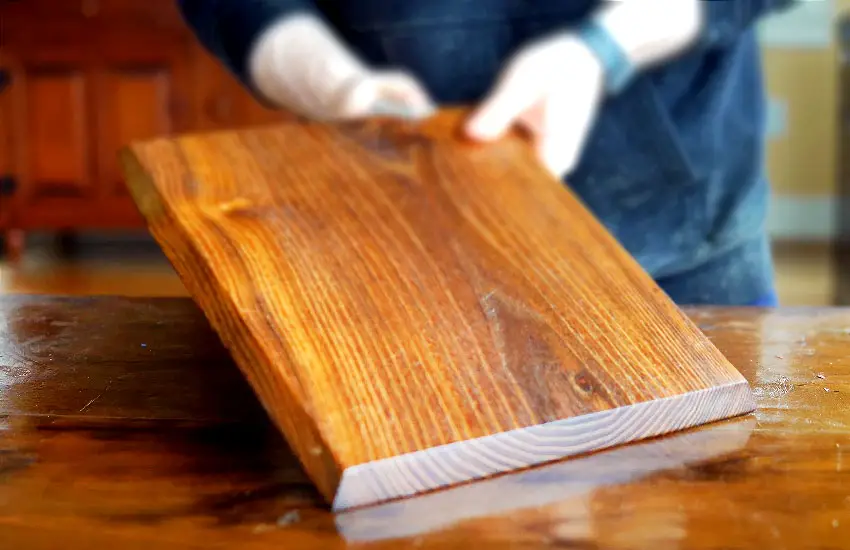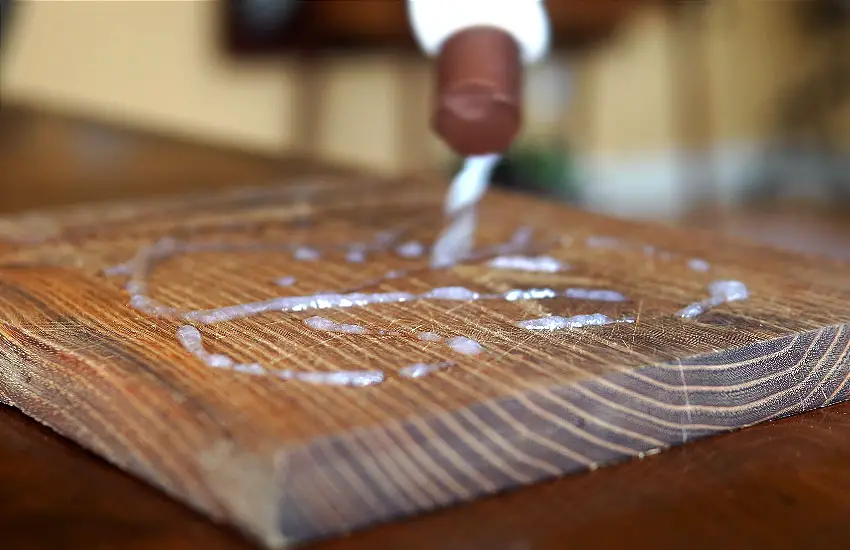As an Amazon Associate, I earn from qualifying purchases at no extra cost to you.
Can You Sand a Cutting Board? Restore, Renew, and Revitalize Your Kitchen Essential
Yes, it is possible to sand a cutting board for a smoother surface and to remove any scratches or imperfections. A cutting board is an essential tool in every kitchen, providing a sturdy and clean surface for food preparation.
Over time, cutting boards can become worn down, with scratches and knife marks becoming more prominent. Sanding is a popular method to restore the beauty and functionality of a cutting board by creating a smoother surface. This process involves using sandpaper or a rotary sander to remove the top layer of wood, eliminating any imperfections and leaving a fresh, even finish.
However, it is important to follow the proper techniques and precautions when sanding a cutting board to maintain its quality and longevity. We will explore the steps involved in sanding a cutting board and provide valuable tips for achieving optimal results.

Why Sand A Cutting Board?
Sanding a cutting board helps to keep it smooth, clean, and in good condition for long-term use. In this section, we’ll explore the reasons why sanding a cutting board is crucial, along with the benefits and the optimal times to carry out this important maintenance task.
Benefits Of Sanding
Sanding your cutting board offers several key benefits. Firstly, it helps to remove any surface imperfections such as scratches, nicks, or rough spots, which can harbor bacteria and compromise the cleanliness of the board.
Additionally, sanding smooths the surface, making it easier to clean, and enhances the overall appearance of the cutting board. It also helps to prolong the lifespan of the board by preventing cracks and warping.
When To Sand Your Cutting Board
Regular maintenance is essential for keeping your cutting board in top condition. It’s recommended to sand your cutting board whenever you notice visible signs of wear and tear, such as deep scratches or rough patches.
Furthermore, if the surface becomes discolored or feels uneven, it’s a good indication that sanding is required. By addressing these issues promptly, you can extend the life of your cutting board and ensure a safe and hygienic food preparation surface.

Preparing Your Cutting Board For Sanding
To prepare your cutting board for sanding, ensure it is clean and free from any lingering food debris. Sanding can help to smooth out any rough surfaces, but be cautious not to sand too much and compromise the integrity of the board.
Cleaning Your Cutting Board
Before you start sanding your cutting board, it is crucial to give it a thorough cleaning to remove any dirt, bacteria, or food residue that may be present. Cleaning your cutting board not only helps in creating a hygienic surface but also ensures that the sanding process goes smoothly.
Here is a simple step-by-step guide to cleaning your cutting board:
- Start by scrubbing the surface of your cutting board with hot, soapy water. Use a dishcloth or a soft brush to scrub the entire surface.
- Pay special attention to the corners, edges, and any grooves present on the cutting board.
- Rinse the cutting board thoroughly to remove all the soap residue.
- Dry the cutting board completely using a clean kitchen towel or leave it to air dry.
To ensure that your cutting board is properly cleaned, you can also use a natural disinfectant like white vinegar or hydrogen peroxide. Simply spray it on the cutting board, let it sit for a few minutes, and then rinse it off.
Removing Deep Stains Or Scratches
If your cutting board has deep stains or scratches that cannot be easily removed through regular cleaning, sanding can help restore its appearance and functionality. Sanding can help smoothen the surface and eliminate any imperfections.
To remove deep stains or scratches from your cutting board:
- Start by choosing the right sandpaper grit. For minor imperfections, a fine grit (200-400) might be sufficient, while deeper scratches and stains may require a medium or coarse grit (100-150).
- Slightly dampen the surface of the cutting board to raise the grain.
- Begin sanding the cutting board using smooth, even strokes. Sand in the direction of the grain to avoid damaging the board.
- Continue sanding until the stains or scratches are no longer visible. Check the surface regularly to ensure you are not sanding too much.
- Once you are satisfied with the results, wipe away any dust or debris with a clean cloth.
Remember to always wear a mask and protective eyewear while sanding to avoid inhaling the dust particles.
By following these steps, you can effectively prepare your cutting board for sanding and achieve a smoother, cleaner surface. Once your cutting board is properly prepared, you can proceed with sanding and refinishing to bring it back to its original glory.
Choosing The Right Sandpaper
When it comes to sanding a cutting board, choosing the right sandpaper is crucial for achieving a smooth and even finish. The right sandpaper can effectively remove imperfections, scratches, and stains, leaving your cutting board looking as good as new.
Understanding Grits
Before we delve into the different types of sandpaper, it’s important to understand the concept of grits. Grit refers to the coarseness or fineness of the sandpaper’s abrasive surface. The higher the grit number, the finer the abrasive particles.
Sandpaper comes in various grits ranging from coarse to fine, with each grit having its own specific use in the sanding process. Using the right grit sequence will ensure that you achieve the desired smoothness on your cutting board.
Different Types Of Sandpaper
Now that you understand the importance of grits, let’s explore the different types of sandpaper available for sanding a cutting board.
Silicon carbide sandpaper, commonly known as wet/dry sandpaper, is a versatile option that can be used for both dry and wet sanding. It is available in various grits and is particularly effective for removing tough stains and discoloration.
Aluminum oxide sandpaper is another commonly used option. It is durable and provides excellent results in the sanding process. It comes in a range of grits, making it suitable for both rough and fine sanding tasks.
For those looking to achieve an exceptionally smooth finish, micro-mesh sanding pads are worth considering. These pads are made of flexible cloth-backed sheets with micro-abrasive crystals embedded in them. They come in different grits, typically ranging from 1500 to 12000, allowing you to gradually refine the surface of your cutting board.
Whichever type of sandpaper you choose, it is essential to follow the grit sequence. Start with a coarser grit to remove larger imperfections and gradually work your way up to finer grits for a smoother finish. Remember to always sand in the direction of the wood grain to avoid scratches and ensure an even result.
With the right sandpaper and proper technique, you can transform your worn-out cutting board into a polished, rejuvenated kitchen essential.
The Sanding Process
The sanding process helps to remove scratches, smooth out imperfections, and ensure your cutting board remains safe and hygienic for food preparation.

Step-by-Step Instructions
- Inspect the Cutting Board: Check for any deep cuts, scratches, or rough spots.
- Choose the Right Sandpaper: Use medium-grit sandpaper for initial sanding and fine-grit sandpaper for a smooth finish.
- Sand in the direction of the Grain: Follow the natural grain pattern of the wood for even sanding.
- Smooth Out the Surface: Continuously move the sandpaper in a circular motion until the cutting board feels smooth to the touch.
- Clean the Board: Remove any wood dust with a damp cloth before applying a food-safe finish.
Tips For Sanding Your Cutting Board
- Use a Sanding Block: This provides a flat, even surface for consistent sanding pressure.
- Work Gradually: Start with a coarser grit and progress to finer grits for a polished result.
- Mind the Corners: Pay extra attention to the corners and edges to ensure a uniform finish.
- Finish with Food-Safe Oil: After sanding, apply a layer of mineral oil or beeswax to protect the wood.
Final Words
Sanding a cutting board can enhance its longevity and appearance. By following the proper steps and using the right tools, you can achieve a smooth and even surface that is safe for food preparation. Remember to regularly maintain and oil your cutting board to keep it in top condition.
Make sure to take the time to sand your cutting board properly, and it will serve you well for years to come.
